Socioeconomic Status and Route Characteristics in Relation to Children’s Exposure to Air Pollution from Road Traffic While Walking to School in Auckland, New Zealand
Abstract
1. Introduction
2. Materials and Methods
2.1. Location
2.2. Instrumentation
2.3. Data Collection
2.4. Meteorological Data
2.5. Data Analysis
3. Results
3.1. Meteorological Parameters
3.2. The Age of Vehicles
3.3. Traffic Flow
3.4. PNC Measurement
3.5. Number of Vehicles and Normalized PNC
3.6. Spikes
4. Discussion
5. Conclusions
Supplementary Materials
Author Contributions
Funding
Institutional Review Board Statement
Informed Consent Statement
Data Availability Statement
Conflicts of Interest
References
- McDonald, N.C. Children’s mode choice for the school trip: The role of distance and school location in walking to school. Transportation 2007, 35, 23–35. [Google Scholar] [CrossRef]
- U.S. Department of Health and Human Services. Physical Activity Guidelines for Americans, 2nd ed.; Department of Health and Human Services: Washington, DC, USA, 2018. [Google Scholar]
- Voss, C. 1-Public Health Benefits of Active Transportation. In Children’s Active Transportation; Larouche, R., Ed.; Elsevier: Amsterdam, The Netherlands, 2018; pp. 1–20. [Google Scholar]
- Dirks, K.N.; Salmond, J.A.; Talbot, N. Air Pollution Exposure in Walking School Bus Routes: A New Zealand Case Study. Int. J. Environ. Res. Public Health 2018, 15, 2802. [Google Scholar] [CrossRef] [PubMed]
- World Health Organization. Ambient air pollution: A global assessment of exposure and burden of disease. Clean Air J. 2016, 26. [Google Scholar] [CrossRef]
- Dons, E.; Laeremans, M.; Orjuela, J.P.; Avila-Palencia, I.; De Nazelle, A.; Nieuwenhuijsen, M.; Van Poppel, M.; Carrasco-Turigas, G.; Standaert, A.; De Boever, P.; et al. Transport most likely to cause air pollution peak exposures in everyday life: Evidence from over 2000 days of personal monitoring. Atmos. Environ. 2019, 213, 424–432. [Google Scholar] [CrossRef]
- Schwartz, J. Air pollution and children’s health. Pediatrics 2004, 113 (Suppl. 3), 1037–1043. [Google Scholar] [PubMed]
- Vineis, P. What Is the Exposome and How It Can Help Research on Air Pollution. Emiss. Control. Sci. Technol. 2018, 5, 31–36. [Google Scholar] [CrossRef]
- Luengo-Oroz, J.; Reis, S. Assessment of cyclists’ exposure to ultrafine particles along alternative commuting routes in Edinburgh. Atmospheric Pollut. Res. 2019, 10, 1148–1158. [Google Scholar] [CrossRef]
- Betancourt, R.M.; Galvis, B.; Balachandran, S.; Ramos-Bonilla, J.; Sarmiento, O.; Gallo-Murcia, S.; Contreras, Y. Exposure to fine particulate, black carbon, and particle number concentration in transportation microenvironments. Atmos. Environ. 2017, 157, 135–145. [Google Scholar] [CrossRef]
- Dirks, K.N.; Wang, J.Y.T.; Khan, A.; Rushton, C. Air Pollution Exposure in Relation to the Commute to School: A Bradford UK Case Study. Int. J. Environ. Res. Public Heal. 2016, 13, 1064. [Google Scholar] [CrossRef]
- Tan, S.H.; Roth, M.; Velasco, E. Particle exposure and inhaled dose during commuting in Singapore. Atmos. Environ. 2017, 170, 245–258. [Google Scholar] [CrossRef]
- Janhäll, S. Review on urban vegetation and particle air pollution–Deposition and dispersion. Atmos. Environ. 2015, 105, 130–137. [Google Scholar] [CrossRef]
- Qiu, Z.; Lv, H.; Zhang, F.; Wang, W.; Hao, Y. Pedestrian exposure to PM2.5, BC and UFP of adults and teens: A case study in Xi’an, China. Sustain. Cities Soc. 2019, 51. [Google Scholar] [CrossRef]
- Grange, S.K.; Dirks, K.N.; Costello, S.B.; Salmond, J.A. Cycleways and footpaths: What separation is needed for equivalent air pollution dose between travel modes? Transp. Res. Part D: Transp. Environ. 2014, 32, 111–119. [Google Scholar] [CrossRef]
- Kaur, S.; Nieuwenhuijsen, M.; Colvile, R. Pedestrian exposure to air pollution along a major road in Central London, UK. Atmos. Environ. 2005, 39, 7307–7320. [Google Scholar] [CrossRef]
- Wenzel, T.; Brett, C.; Robert, S. Some issues in the statistical analysis of vehicle emissions. J. Transp. Stat. 2001, 3, 1–14. [Google Scholar]
- Miller, T.L.; Davis, W.T.; Reed, G.D.; Doraiswamy, P.; Tang, A. Effect of County-Level Income on Vehicle Age Distribution and Emissions. Transp. Res. Rec. J. Transp. Res. Board 2002, 1815, 47–53. [Google Scholar] [CrossRef]
- Zhang, Q.; Fan, J.; Yang, W.; Ying, F.; Bao, Z.; Sheng, Y.; Lin, C.; Chen, X. Influences of accumulated mileage and technological changes on emissions of regulated pollutants from gasoline passenger vehicles. J. Environ. Sci. 2018, 71, 197–206. [Google Scholar] [CrossRef] [PubMed]
- Bunds, K.S.; Casper, J.M.; Hipp, J.A.; Koenigstorfer, J. Recreational walking decisions in urban away-from-home environments: The relevance of air quality, noise, traffic, and the natural environment. Transp. Res. Part F: Traffic Psychol. Behav. 2019, 65, 363–375. [Google Scholar] [CrossRef]
- Hewawasam, C.; Bandara, S.; Wirasinghe, S. Analysis of factors affecting pedestrian route choice. J. Chem. Inf. Model. 2013, 53, 1689–1699. [Google Scholar]
- Climate-Data. Auckland Climate. 2020. Available online: https://en.climate-data.org/oceania/new-zealand/auckland/auckland-3605/ (accessed on 31 March 2020).
- Stats, N.Z. 2018 Census Population and Dwelling Counts. Available online: https://www.stats.govt.nz/information-releases/2018-census-population-and-dwelling-counts (accessed on 20 August 2020).
- The Ministry of Education. School Deciles. 2018. Available online: https://education.govt.nz/school/running-a-school/resourcing/operational-funding/school-decile-ratings/ (accessed on 1 June 2018).
- TSI. P-Trak Ultrafine Particle Counter Model 8525. 2019. Available online: https://tsi.com/products/indoor-air-quality-meters-instruments/indoor-air-quality-meters/p-trak-ultrafine-particle-counter-8525 (accessed on 31 March 2020).
- Samsung. Galaxy S8+. 2021. Available online: https://www.samsung.com/ca/smartphones/galaxy-s8/camera/ (accessed on 18 February 2021).
- CarJam Online Limited. CarJam 2019. Available online: https://www.carjam.co.nz/ (accessed on 20 September 2019).
- Qstarz International Co., Ltd. BT-Q1000x Travel Recorder. Available online: http://www.qstarz.com/Products/GPS%20Products/BT-Q1000XT-F.htm (accessed on 29 December 2018).
- NIWA. The National Climate Database. 2019. Available online: https://cliflo.niwa.co.nz/pls/niwp/wgenf.genform1 (accessed on 25 December 2019).
- Xiang, S.; Yu, Y.T.; Hu, Z.; Noll, K.E. Characterization of Dispersion and Ultrafine-particle Emission Factors Based on Near-roadway Monitoring Part II: Heavy Duty Vehicles. Aerosol Air Qual. Res. 2019, 19, 2421–2431. [Google Scholar] [CrossRef]
- Esri. ArcGIS 10.7.1; Esri: Redlands, CA, USA, 2019. [Google Scholar]
- Ministry of Transport. 2019 Annual Fleet Statistics. Available online: https://www.transport.govt.nz/statistics-and-insights/fleet-statistics/sheet/2019-annual-fleet-statistics (accessed on 30 December 2020).
- Goel, A.; Kumar, P. Zone of influence for particle number concentrations at signalised traffic intersections. Atmos. Environ. 2015, 123, 25–38. [Google Scholar] [CrossRef]
- Bereitschaft, B. Pedestrian exposure to near-roadway PM2.5 in mixed-use urban corridors: A case study of Omaha, Nebraska. Sustain. Cities Soc. 2015, 15, 64–74. [Google Scholar] [CrossRef]
- Ai, Z.; Mak, C. From street canyon microclimate to indoor environmental quality in naturally ventilated urban buildings: Issues and possibilities for improvement. Build. Environ. 2015, 94, 489–503. [Google Scholar] [CrossRef] [PubMed]
- Both, A.F.; Westerdahl, D.; Fruin, S.; Haryanto, B.; Marshall, J.D. Exposure to carbon monoxide, fine particle mass, and ultrafine particle number in Jakarta, Indonesia: Effect of commute mode. Sci. Total. Environ. 2013, 443, 965–972. [Google Scholar] [CrossRef]
- Lewis, A.; Carslaw, D.; Moller, S.J. Ultrafine Particles (UFP) in the UK; 2018, White Rose Research Online. Available online: http://eprints.whiterose.ac.uk/156631 (accessed on 15 November 2020).
- Dirks, K.N.; Kirkland, T.; Wang, J.Y.T.; Salmond, J.A. The Consequences of Vehicle Emission Legislation on Pedestrian Exposure in the Journey to School: A Comparison of the United Kingdom and New Zealand. In Proceedings of the ISEE 2017, Sydney, Australia, 23 March 2017. [Google Scholar]
- Parry, T. Vehicle Licensing Statistics: Annual 2018; Department for Transport, Great Minster House: London, UK, 2019. [Google Scholar]
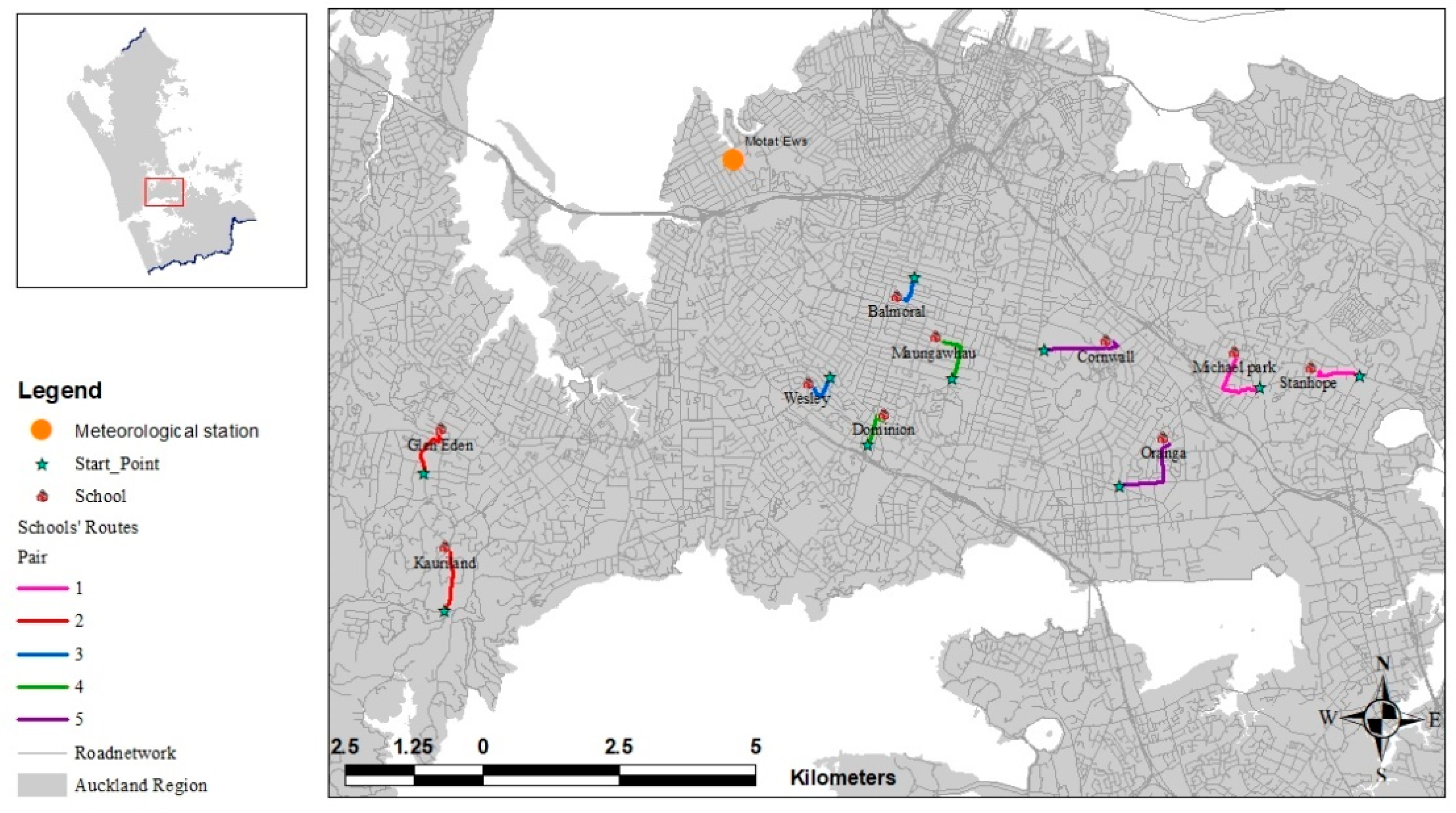
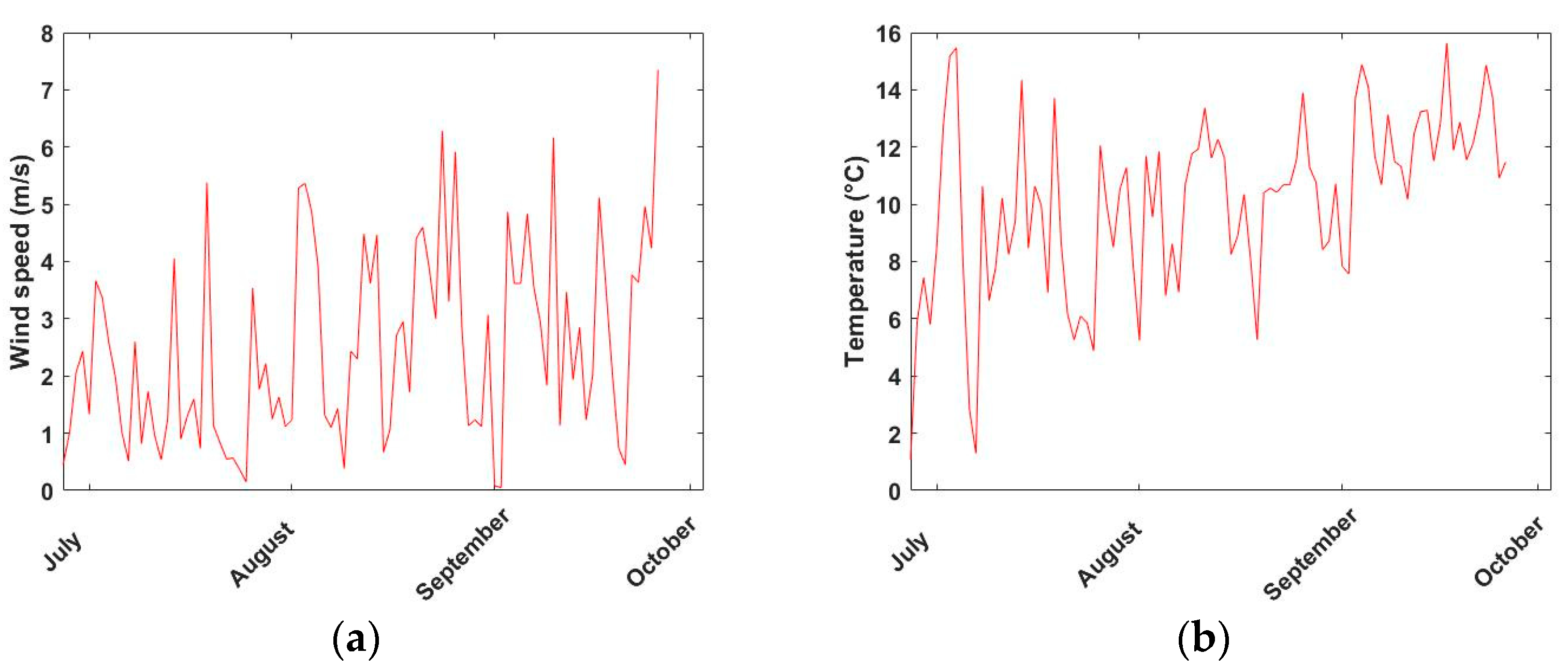
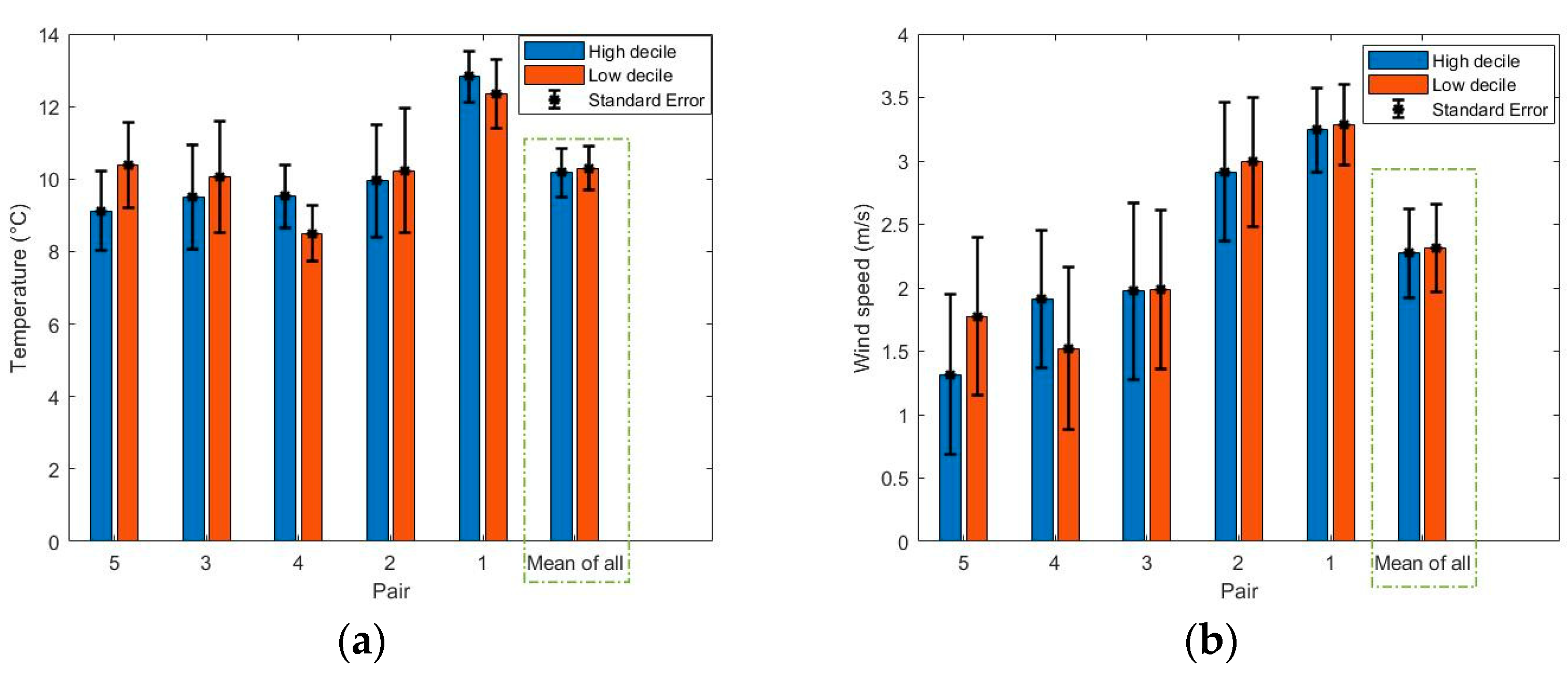
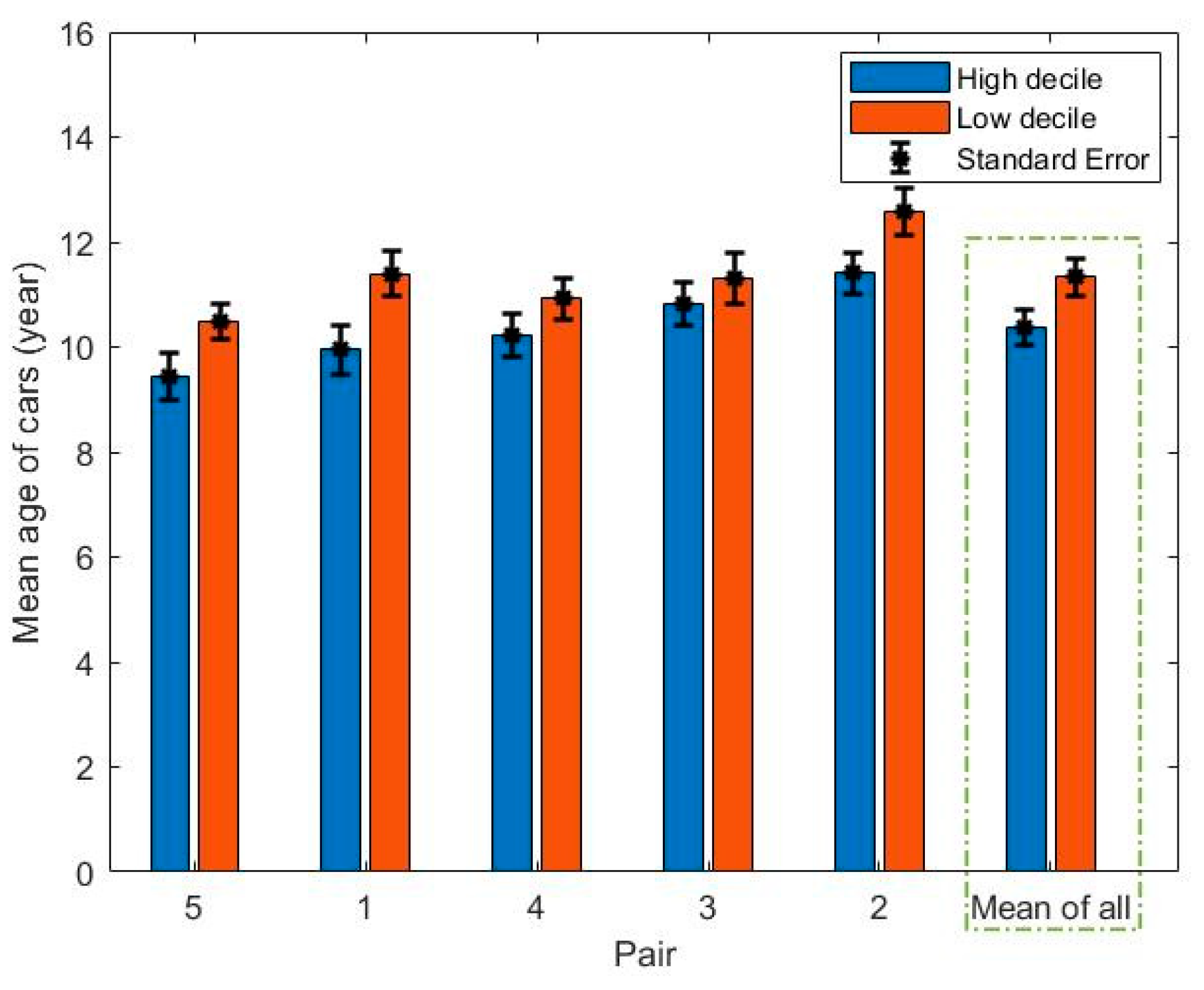


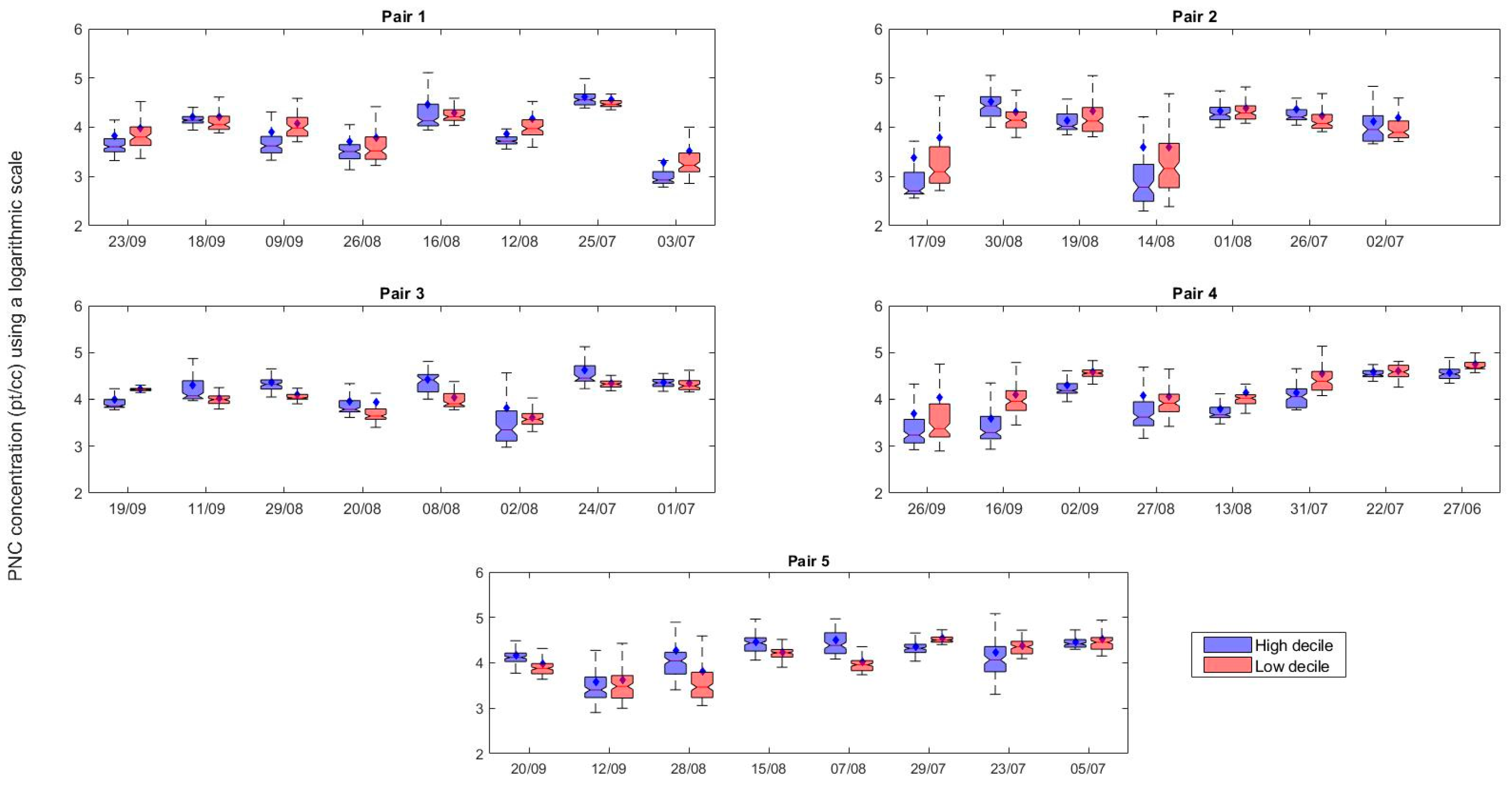
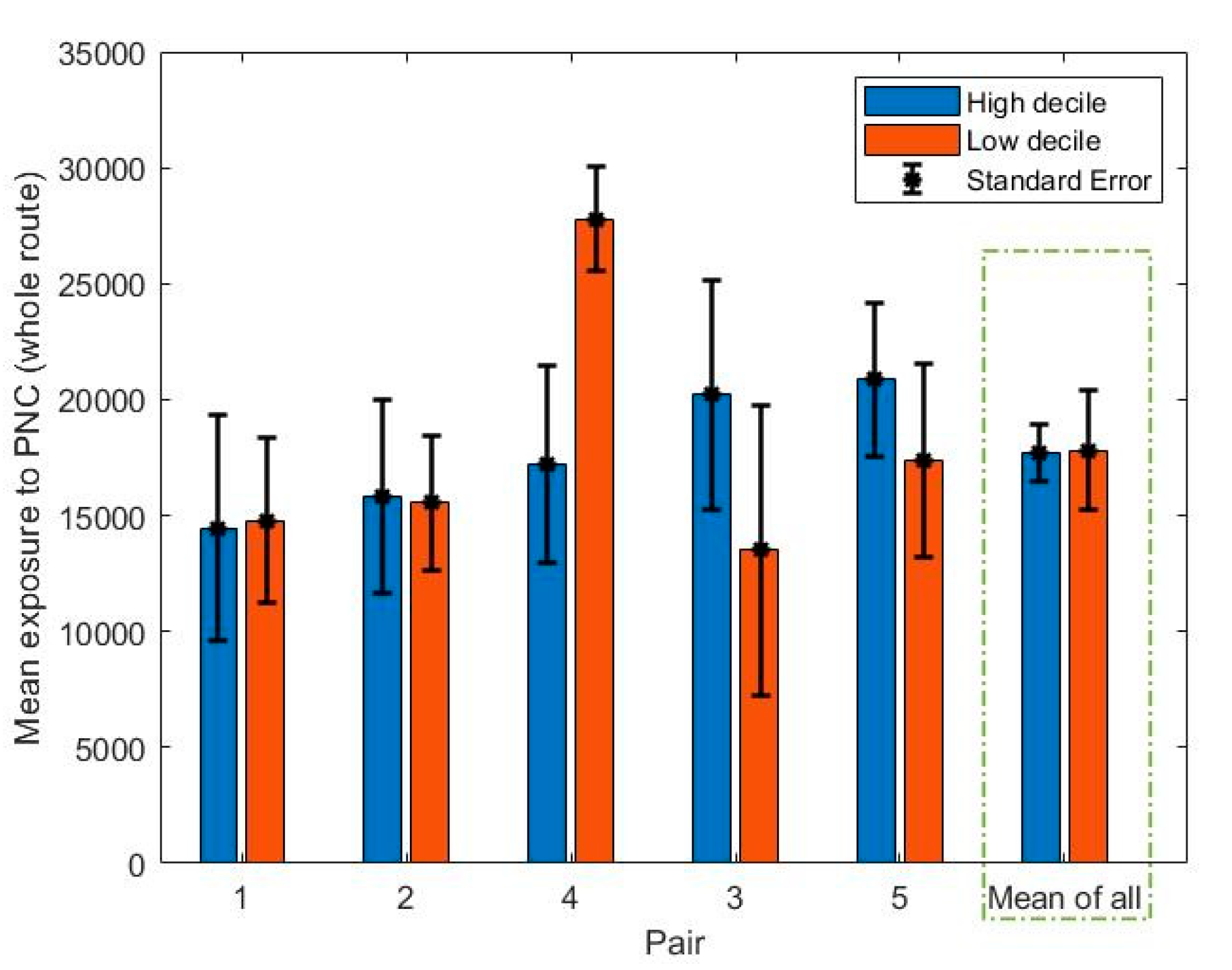

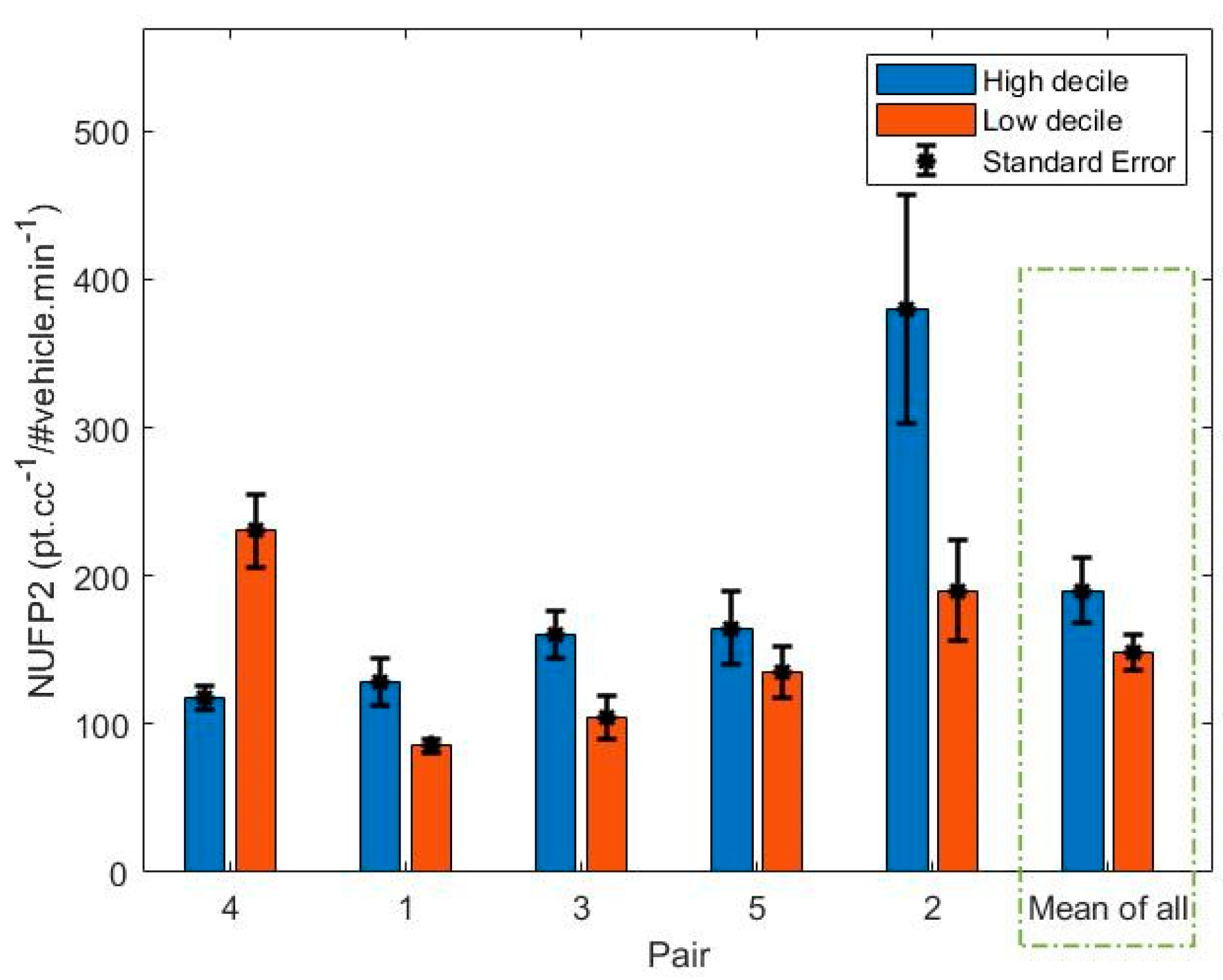

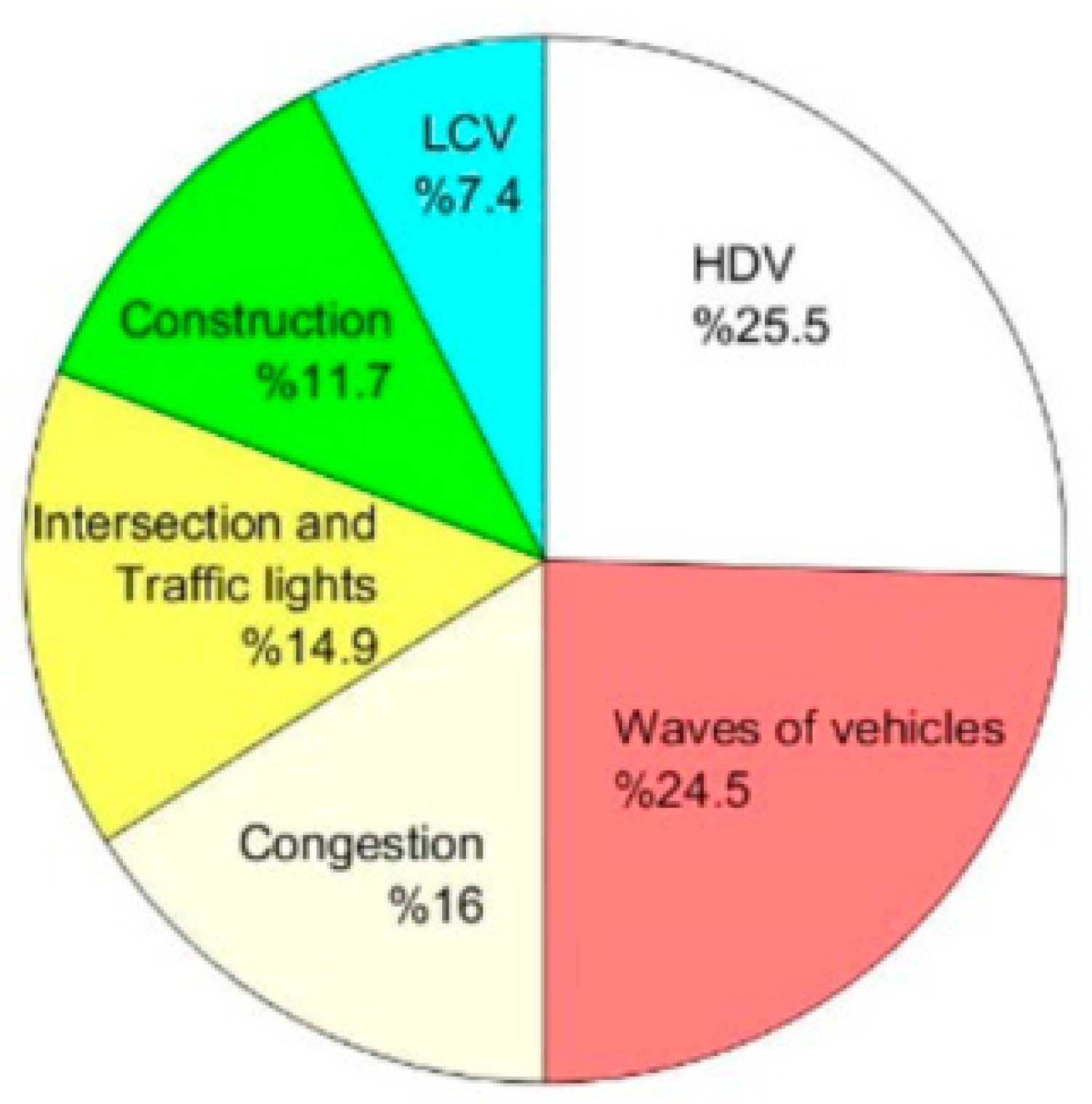
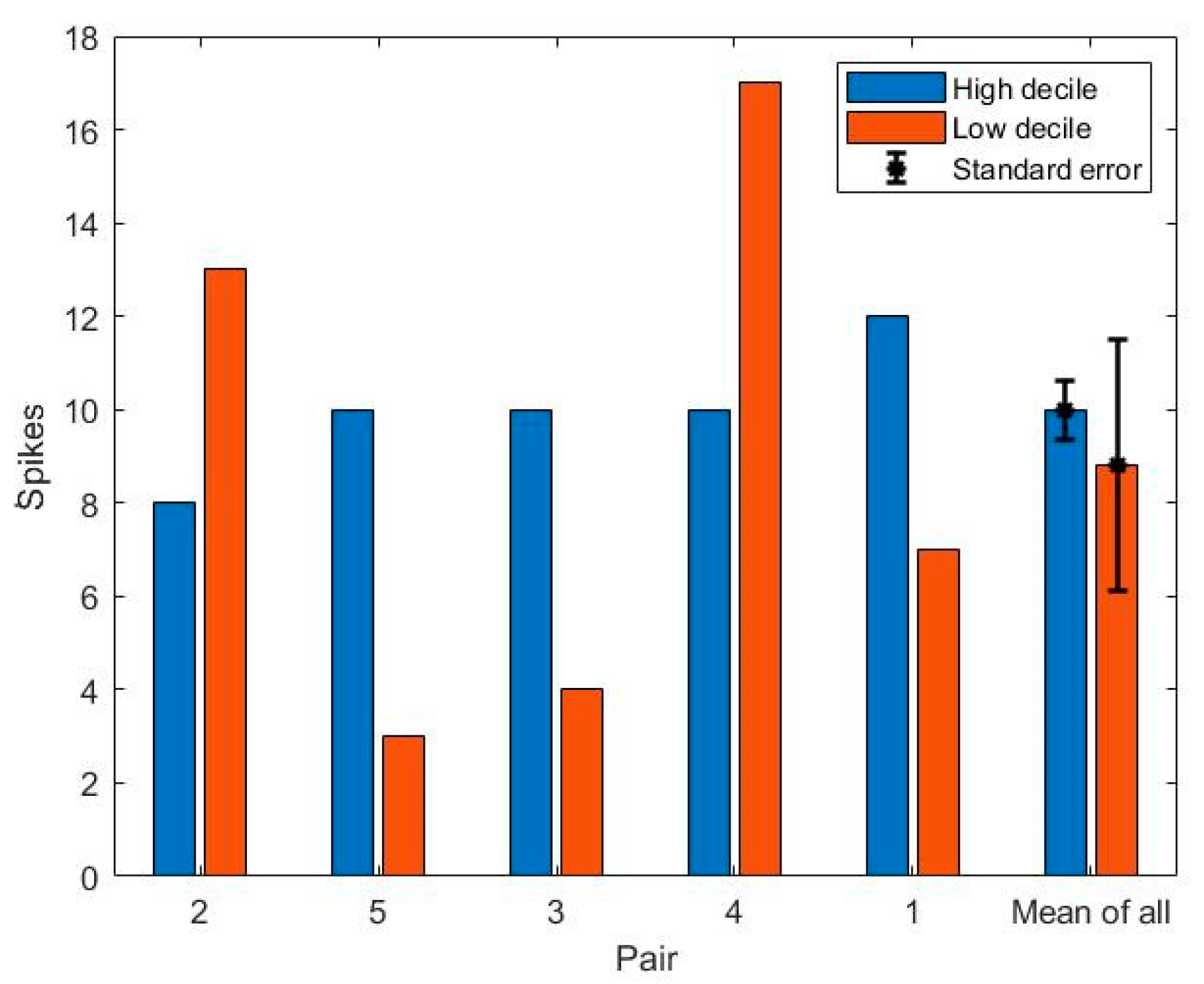
| Pair Number | High Decile School–Decile–Distance of Routes (km) | Low Decile School–Decile–Distance of Routes (km) | Distance between Two Schools (km) |
|---|---|---|---|
| 1 | Michael Park School–8–1.42 | Stanhope Road School–4–0.87 | 1.4 |
| 2 | Kaurilands School–8–1.21 | Glen Eden–2–1.1 | 1.9 |
| 3 | Balmoral School–9–0.69 | Wesley Primary–1–0.68 | 2.3 |
| 4 | Maungawhau School–10–0.97 | Dominion Road School–3–0.70 | 1.7 |
| 5 | Cornwall Park District–9–1.44 | Oranga School–3–1.50 | 1.9 |
| Low Decile | High Decile | |||||
|---|---|---|---|---|---|---|
| Pair Number | Width of Road (m) | Width of Footpath (m) | Number of Traffic Lights | Width of Road (m) | Width of Footpath (m) | Number of Traffic Lights |
| 1 | 15 | 1–2 | 1 | 13 | 1–3.5 | 1 |
| 2 | 6.5–12.5 | 3.5–5.5 | 1 | 10–14 | 1.5–2 | 0 |
| 3 | 13 | 5–5.5 | 0 | 13.5 | 3–3.5 | 1 |
| 4 | 12.5 | 3 | 2 | 13.5 | 3.5–4 | 1 |
| 5 | 13.5 | 3.5–4 | 1 | 17.5 | 2.5–3 | 3 |
Publisher’s Note: MDPI stays neutral with regard to jurisdictional claims in published maps and institutional affiliations. |
© 2021 by the authors. Licensee MDPI, Basel, Switzerland. This article is an open access article distributed under the terms and conditions of the Creative Commons Attribution (CC BY) license (https://creativecommons.org/licenses/by/4.0/).
Share and Cite
Rafiepourgatabi, M.; Woodward, A.; Salmond, J.A.; Dirks, K.N. Socioeconomic Status and Route Characteristics in Relation to Children’s Exposure to Air Pollution from Road Traffic While Walking to School in Auckland, New Zealand. Int. J. Environ. Res. Public Health 2021, 18, 4996. https://doi.org/10.3390/ijerph18094996
Rafiepourgatabi M, Woodward A, Salmond JA, Dirks KN. Socioeconomic Status and Route Characteristics in Relation to Children’s Exposure to Air Pollution from Road Traffic While Walking to School in Auckland, New Zealand. International Journal of Environmental Research and Public Health. 2021; 18(9):4996. https://doi.org/10.3390/ijerph18094996
Chicago/Turabian StyleRafiepourgatabi, Mehrdad, Alistair Woodward, Jennifer A. Salmond, and Kim N. Dirks. 2021. "Socioeconomic Status and Route Characteristics in Relation to Children’s Exposure to Air Pollution from Road Traffic While Walking to School in Auckland, New Zealand" International Journal of Environmental Research and Public Health 18, no. 9: 4996. https://doi.org/10.3390/ijerph18094996
APA StyleRafiepourgatabi, M., Woodward, A., Salmond, J. A., & Dirks, K. N. (2021). Socioeconomic Status and Route Characteristics in Relation to Children’s Exposure to Air Pollution from Road Traffic While Walking to School in Auckland, New Zealand. International Journal of Environmental Research and Public Health, 18(9), 4996. https://doi.org/10.3390/ijerph18094996







